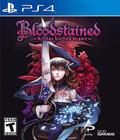It can be difficult to do a spiritual successor to a popular franchise. A few missteps or a misunderstanding of what the fans love, and even the most loyal-seeming game can alienate the people who wanted to love it the most. Bloodstained: Ritual of the Night has a hard road ahead. Developed under the eye of Koji Igarashi, who's best known for his work on the Castlevania series, Bloodstained is a clear love letter to the franchise. At the same time, it has to capture what made Castlevania fun. Fortunately, from what our demo showed us at E3 2017, it's on a solid path.
Bloodstained follows the story of a woman named Miriam. In an attempt to maintain their power, a group of evil alchemists performed a ritual involving the sacrifice of orphan children. Of course, the ritual went badly and conjured a castle full of monsters. Miriam is the sole survivor of the ritual, but she is now the victim of a curse that is slowly turning her body into crystal shards. She must venture into the castle to save herself and the world from evil.
Bloodstained is about as straightforward an homage to the Symphony of the Night style gameplay as you can get. It's similar enough that any fan of the franchise probably wouldn't need a tutorial to hop in and play. The core gameplay is a simple mix of platforming and basic action-RPG combat, with a variety of equippable weapons and available powers. Similar to later-era Castlevania DS protagonists, Miriam has a magic meter that replenishes gradually over time after she uses her powers, although most of her time will be spent using equippable melee weapons.
The demo showed off a variety of weapon types. Among the weapons you can find are claymores, katanas, knives, maces, spears, swords, and, of course, whips. As in Castlevania titles, each weapon has strengths and weaknesses. Most will feel familiar to fans of the franchise. Knives are fast, katanas powerful but have a longer swing, spears have range, and so on. The only real difference is the whip, which has a circular slashing movement.
In addition to weapons, you also have Shards, which are an evolution of the Soul system found in Castlevania: Aria of Sorrow. You'll either find magical shards scattered throughout the game or by defeating enemies. Miriam takes the shards into herself to gain a variety of bonuses. Some are active, such as the ability to throw a fireball or a bone. Some are passive, such as a familiar that flies around and smacks enemies. Some just provide special bonuses, such as a rare shard I found that gives a 15% increase to weapon swing speed. The shards can be equipped or unequipped at will, and there are special shards that grant permanent new abilities, such as a double-jump.
The demo was laid out as a standard Castlevania-style level, with largely straightforward paths and optional side paths that could lead to bonus content. Players are rewarded for thinking creatively. Familiars filled the role of Medusa heads and floated across the screen. If I disabled my familiar, I found a fun trick: The double-jump soul lets you bounce off their heads to reach areas that are normally inaccessible. These completely optional areas had hidden secrets, including valuable items and weapons, and it felt very satisfying to find them through a smart use of my power.
The end of the demo involved a boss fight against the newly revealed boss, Bloodless, who's an Elizabeth Bathory type. She's an evil vampire who bathes in a tub full of blood, and she can manipulate the blood with her mind, so she creates a Victorian dress and magical umbrellas. The boss fight involves dealing with very bloody attacks. Her primary method of attack involves spewing blood in quick bursts or large torrents, which do a ton of damage. Attacking her tears her outfit, which drops more blood that she can manipulate for unexpected attacks, including a torrential downpour of rain that you can avoid by ducking beneath her floating umbrellas . Defeating her unlocked a special boss shard, but the demo ended before we saw what it did.
All in all, the Bloodstained demo at E3 gives a very tantalizing look at what is to come. There are some places it could be smoothed out, but it feels like Castlevania in all the right ways. The level design, powers and weapons all come together in a way that appeals to the part of the brain that's nostalgic for some Metroidvania-style gameplay. Even the boss fight felt like a creative and fun take on a vampire fight. If the final iteration of the game lives up to what we've seen thus far, Bloodstained: Ritual of the Night will be the rare spiritual successor that embodies everything that made the original work.
More articles about Bloodstained: Ritual of the Night











 Bloodstained: Ritual of the Night is a gothic, exploration-focused action platformer, designed by Koji Igarashi, known for his work on Castlevania: Symphony of the Night.
Bloodstained: Ritual of the Night is a gothic, exploration-focused action platformer, designed by Koji Igarashi, known for his work on Castlevania: Symphony of the Night.














